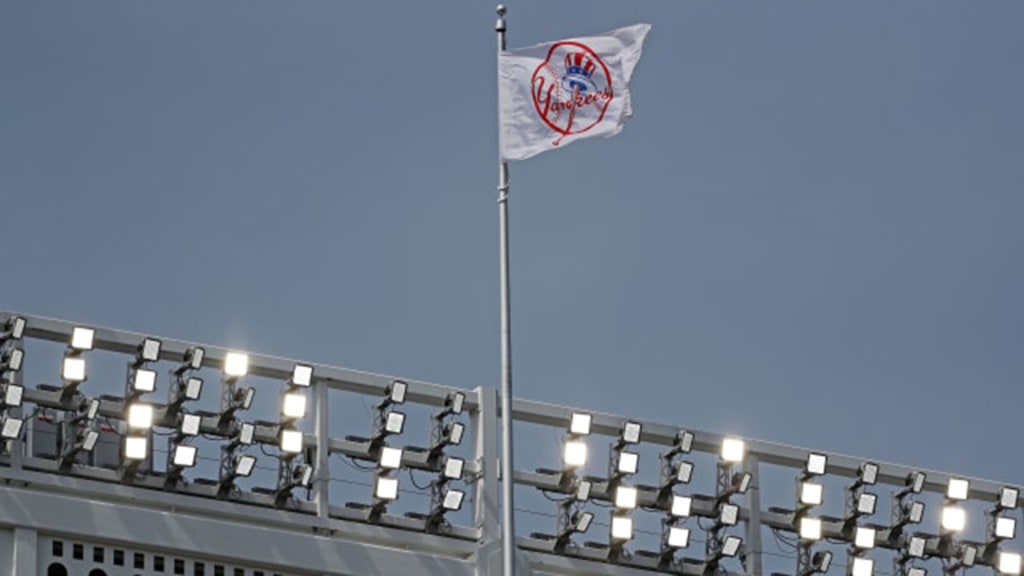Yankees making Stadium greener than ever

NEW YORK -- The official colors of the Yankees’ uniforms are midnight navy and white, but thanks to the sustainability initiatives incorporated by the organization over the past several seasons, Yankee Stadium has become one of the greenest facilities in the Majors.
In April 2019, the Yankees became the first major North American sports team to sign on to the United Nations Sports for Climate Action Framework, aiming to bring greenhouse emissions in line with the Paris Climate Change Agreement and inspire others to take ambitious climate action. Promoting the United Nations’ “17 Sustainable Development Goals” — which were initially adopted by 195 countries in 2015 and outline the features that comprise a sustainable community — is fundamental to the operation of Yankee Stadium.
“For many years, the Yankees have been implementing the type of climate action now enshrined in the Sports for Climate Action principles,” said Yankees managing general partner Hal Steinbrenner. “With this pledge, the Yankees commit to continue to work collaboratively with our sponsors, fans and other relevant stakeholders to implement the UN’s climate action agenda in sports.”
At the direction of the club’s environmental science advisor, Dr. Allen Hershkowitz, the Yankees said that they have focused on ecologically intelligent procurement, carefully considered operational practices and collaboration with local agencies and business partners.
Among the ecologically intelligent measures at Yankee Stadium:
High-efficiency LED lighting: Before the 2016 season, the Yankees installed light-emitting diodes (LED) field lighting, becoming only the second Major League facility to do so. The LED lights used at Yankee Stadium are 40% more efficient and 50% brighter than the previous field lighting used at the Stadium. The energy saved from the new field lighting is enough to power about 45 homes every day.
Energy-efficient technologies and design: The 31,000-square-foot Great Hall at Yankee Stadium, through which most guests arrive, is the largest open-air public entry at any sports venue in the world. Using natural air-cooling, the energy savings per game are approximately the same as 125 New York City apartments shutting off their air-conditioning on a hot summer day.
Composting and recycling: The Yankees are committed to achieving zero waste and promoting a circular economy based on composting, recycling and the recovery and use of waste oil. Through the overall efforts of fans and Stadium staff, approximately 85 percent of the Stadium’s total trash avoids landfills, making Yankee Stadium one of the most successful recycling venues in all of sports.
Water conservation: Through careful monitoring and high-efficiency plumbing fixtures, Yankee Stadium saves more than three million gallons of water each year, a 22 percent reduction of water use when compared to the pre-2009 figure.
Healthy air quality: Yankee Stadium uses high-performance filters and a regular replacement program to ensure particle removal effectiveness of MERV 13 or greater for better air quality and energy efficiency in its HVAC system.
To further enhance Stadium health and safety -- and in conjunction with the International WELL Building Institute (IWBI) -- Yankee Stadium became in August 2020 the first sports and entertainment venue in the world to achieve the WELL Health-Safety Rating for Facility Operations and Management.
The rating requirements, which the club has fulfilled, serve as a blueprint for best operating procedures to help combat COVID-19 while also providing world-class standards for overall health and safety.
By achieving this designation, which has been confirmed by a third-party verifier, Green Business Certification Inc. (GBCI), the club can operate with confidence that they are utilizing best practices for players and staff, and that they are appropriately prepared to accommodate the reintroduction of fans.
Senior Reporter Bryan Hoch has covered the Yankees for MLB.com since 2007.




